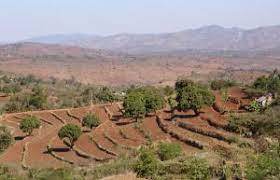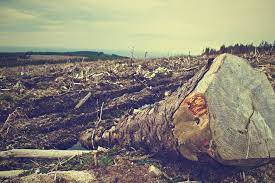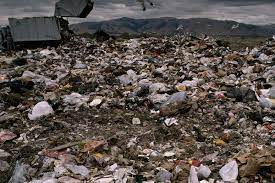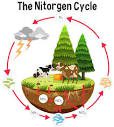Soil Conservation: Meaning, Categories and Soil Management Practices
In this article we are going to look at how we can conserve our soils (soil conservation) and make them useful to us. Therefore, be prepared to know what to do when a land is eroded.
Three main practices are common, they include managing soil when it is being cultivated in a sustainable manner; applying certain control techniques and reclaiming of land that is already damaged by accelerated soil erosion.
Soil Conservation and Its Objectives
In the course of this article, it has been pointed out that it takes a long time for any soil to form. Similarly, it has been indicated that the same soil can be lost very easily. This brings about the issue of soil conservation.
By definition, soil conservation is the protection of soil against erosion or deterioration. It can also be regarded as the preservation and careful management of soil resources for sustainable development.
The objectives of soil conservation are to:
Minimize the rate of soil loss attendant on the use of land for agriculture and other purposes; and
Render suitable for cultivation land which has been wasted by accelerated soil erosion.
Categories of Soil Conservation Practices
It has been stated earlier that when soil is mismanaged, soil deterioration occurs. This is usually followed by accelerated soil erosion in differing degrees. Since this is the case, it is important that steps should be taken to halt soil erosion whenever there are signs of its actions.
Read Also : The Six (6) Physical Properties of Soil
This is because, once soil erosion has occurred and the topsoil has been lost, it takes a lot of effort to bring it back to its former status.
The practices of soil conservation in order to achieve the objectives stated in Section 3.1 fall mainly into three categories. These are:
Soil management practice;
Soil erosion control techniques; and
Land reclamation practice.
1. Soil Management Practice
The first category of soil conservation practices as indicated earlier is the introduction of soil management ideas and practices into routine farming operations. These operations could include the promotion of wise use of the land so as to conserve its natural fertility or replace it with artificial fertilizers.
You should note that these practices are in form of scientific or indigenous farming which involves crop rotation, the use of cover crops, fertilizers, manures and mulching. Furthermore, this soil management practice could also involve the sensible tillage such as zero tillage, aimed at preserving the soil cover of farmlands.
2. Soil Erosion Control Techniques
The second category of soil conservation practices is the use of certain basic techniques for controlling erosion, such as contour farming, strip cropping and terracing.
The technique adopted will be dictated by the type of cropping and nature of relief so as to reduce soil erosion on agricultural land.
Contour farming involves planting in rows or operating farm equipment across the slope. This method helps to conserve soil and water as the rows of ridges or crops, or both, act to check water flow.
This method has been effectively used in USA with soil and water losses were drastically reduced even on high slopes thereby increasing farm yields substantially.
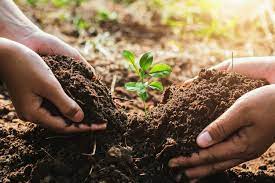
Strip cropping is the practice of planting alternate strips with close-growing row or grain crops following the contour across a slope. This system is usually adopted on slopes that are too steep to terrace.
In the same manner of contour farming, strip cropping also slows down runoff water flowing through the close-growing strip. It also increases the infiltration rate which further reduces total runoff. In addition, the crops grown intercept raindrops and so reduce both splash and sheet erosion.
Terracing involves the building of mud embankments or a combination of channels and embankments across slopes, usually at fixed intervals. Terracing may also involve creating flat or nearly flat surfaces along slopes that are normally too steep for cultivation.
Generally, terracing controls erosion by reducing slope length as well as slope steepness. It also slows down runoff which may also be conducted across the slope in definite channels where it flows at non-erosive velocity.
3. Land Reclamation Practice
When accelerated soil erosion is not checked the affected land surface becomes a bad land i.e. a land that is almost useless for any use. However, such land could be reclaimed through afforestation, the reservation of whole areas to prevent or minimize the effects of human activities and the filling of pits.
For the success of this third category of soil conservation, the cooperation and total involvement of the local people is needed. More often than not, the governments or agencies usually undertake reclamation projects. In some cases, the projects may be executed through the local people or directly by the government or agency.
In conclusion, in this article, we have seen that when accelerated soil erosion occurs, it is possible to take steps to regain the land. Furthermore, it is also indicated that efforts could be made to prevent accelerated soil erosion from taking place.
In order to achieve the objectives of soil conservation three categories of soil conservation processes are usually effected. These include soil management practice, soil erosion control techniques and land reclamation practice.
The first two categories of soil conservation practices are necessary in order to make the use of soil sustainable. The third category of soil conservation practices is done to restore an already bad land surface.
We have also seen that soil as a resource could be misused by man and when this happens soil erosion occurs.
However, in this unit, we have seen that efforts can be made to avert soil erosion; and that even when it is inevitable, steps can also be taken restore it.
Therefore, the main objectives of soil conservation are to minimize the rate of soil loss and to render suitable for cultivation purposes land that has been wasted by accelerated soil erosion.
There are three major ways by which soil conservation practices are achieved. The first one concerns managing the soil sustainably in the process of cultivation such as using manure, chemical fertilizers and mulching.
Read Also : Integrative Soil Classification Systems
The second way is the adoption of certain soil erosion control techniques that will be used to check accelerated soil erosion. These techniques are contour farming, strip cropping arid terracing.
Land reclamation practice is the third way by which soil conservation could achieved in places that have been badly damaged by accelerated soil erosion. This category of soil conservation is usually embarked upon by governments and agencies with the cooperation of local population.
